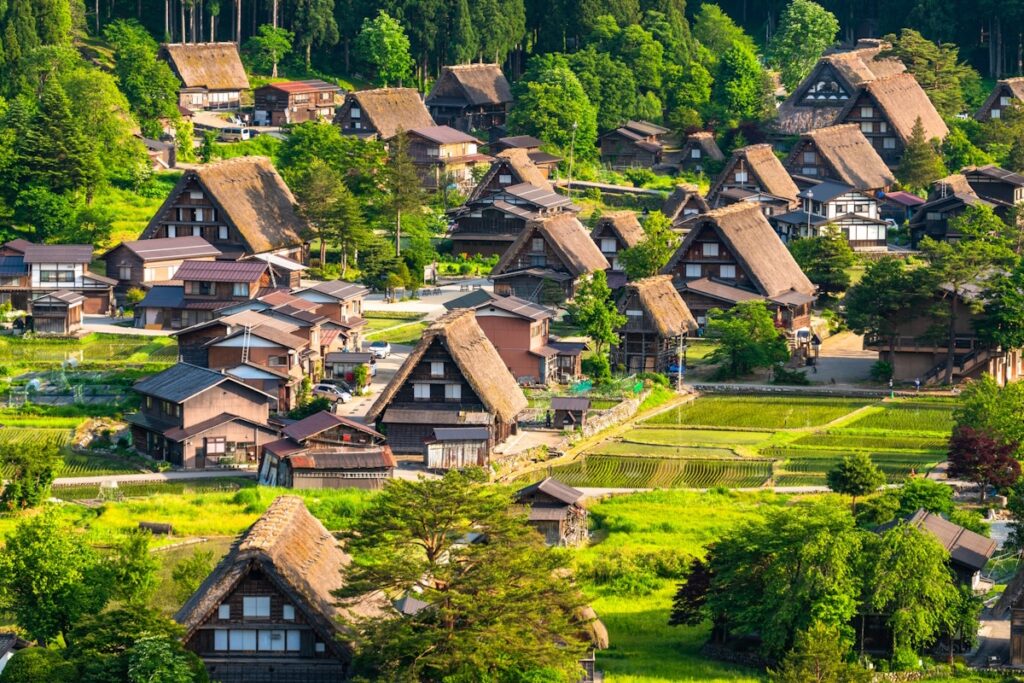[ad_1]
The latest ranking for inbound tourists’ top picks for historic sites and gardens. The number one destination is no surprise. But the challenges it faces internally, as well as the burden it carries from mannerless tourists, are shocking.
Top 10 historic sites and gardens
Mov inc., is the headquarters for the inbound tourism website Honichi Lab. The company released its independent findings of tourist spots that are the most popular among inbound visitors on February 19th.
mov used its analytics tool, Kutikomicom, to analyze the 1,300+ online reviews users shared on Google Maps between January 2nd and January 15th this year to rank the top historic sites and gardens.
The UNESCO World Heritage site Shirakawa Village, or Shirakawago (白川郷) in Japanese, ranked number one by a landslide. It has 300 more popularity points and 70 more foreign-language reviews than the Arakuyama Sengen Park, where Mt. Fuji and a crimson five-story pagoda fit perfectly in one picturesque frame.
In third place, the dog locals and visitors use as a meeting point in Shibuya Station’s bustling square, the famous Hachiko Statue, trailed behind by 11 points and 1 review.
mov released a list revealing up to the tenth most popular spot. Two destinations tied in fifth place.
1. Shirakawagou Village in Gifu
Advertisements
2. Arakuyama Sengen Park in Yamanashi
3. Hachikou Memorial Statue in Tokyo
4. Shinjuku Gyoen National Park in Tokyo
5. Kenrokuen Garden in Ishikawa
5. Kyoto Imperial Palace in Kyoto
7. Okayama Kourakuen Garden in Okayama
8. Kokoen Garden in Hyogo
9. Sapporo Clock Tower in Hokkaido
10. Fukushūen Garden in Okinawa
mov also ranked the top historic sites and gardens by the reviews’ language. English speakers rated the top three in the order of Shirakawagou, Shinjuku Gyoen, and Arakuyama Sengen Park.
Shirakwago struggles to maintain its identity

Home to 300+ years old gassho-zukuri (合掌造り) farmhouses in an area that is 96% forest, the traditional settlement of Shirakawago stands still in a bygone era. Approximately 500 people, 30+% above the age of 65, reside in the village today.
Besides being beautiful and picturesque, the site is a popular “holy ground” (聖地; seichi) for fans of the popular visual novel and anime Higurashi: When They Cry. The village of Hinamizawa in the series is patterned after Shirakawago.
Tourists can experience residential life here too. More than a dozen of the farmhouses are now functioning as minshuku (民宿), or family-run, Japanese-style lodgings that cost between ¥8,000 (USD 54) and ¥20,000 (USD 135) per person overnight. Stays are only available for one night, and some minshuku only accept guests who have a good knowledge of Japanese.
However, Shirakawago is facing some internal and inbound challenges.
30% of residents living in the village’s approximately 110 farmhouses say they “feel uneasy” about staying and maintaining their properties. At the same time, residents report feeling helpless about their farmhouses decaying after moving out of the village.
The farmhouses, whose numbers declined from approximately 300 before WW2 to approximately 130 in 1971, are at the forefront of residential values. So, in 1971, locals created a residential charter that forbids that selling, renting, and breaking gassho-zukuri homes.
Nuisance tourists exemplify what not to do
However, the village’s aging and declining population is forcing the president of the conservation committee Shinji Nodani, 46, to reconsider this rule. Without an influx of new residents, it’s possible the village could die out.
As a result, the committee decided to amend the ban against renting out farmhouses. Priority will go to people from the same Ogimachi district who have left but wish to return. Residents of the village’s surrounding areas are next in line.
An influx of day-trip tourists is giving the village another headache. 80 to 90% of visitors are inbound tourists, Atsushi Itaka, 43, from the Shirakawagou Tourist Association told reporters last month.
“I’m happy that many people are visiting. But on the other hand, a lot of residents are concerned about the problems they cause,” he said.
For example, he explains that the area lacks trash cans due to a limited budget and a no-fee system to enter the village. However, that ‘s no excuse for the behavior Itaka has witnessed.
“There are people who throw their trash into the toilet,” he said. Heat packs clogged the toilets this season, requiring assistance from plumbers to fix them on multiple occasions.
Chiyomi Yano, 59, who works at a minshuku says that some tourists have resorted to hiding trash in the snow this winter.
“There are so many people who stuff used sticks for dango and empty plastic bottles in the snow. When the snow melts in the spring, trash is everywhere,” she said.
Some nuisance behavior has led to harsh decisions.
Last year, the parking lot of the village’s observatory deck was an absolute zig-zag mess of cars that had parked in a disorderly manner. The cars blocked the exit. Incoming cars couldn’t move, creating a huge traffic jam. As a result, the village has shut down the parking lot.
Sources
外国人に人気の史跡・庭園ランキングを発表!1位は「白川郷」:インバウンド人気
光地ランキング #インバウンドMEO . MOV
世界遺産の合掌造り「白川郷」、過疎化で「貸さない」ルール見直し移住受け入れへ. 読売新聞
雪景色の白川郷に観光客が殺到 観光客のマナー違反が日本の原風景に大きな影響も… 岐阜・白川郷. 中京テレビNEWS
What Kind of Place is Shirakawa-go?. Shirakawa-go tourist information
[ad_2]
Source link



